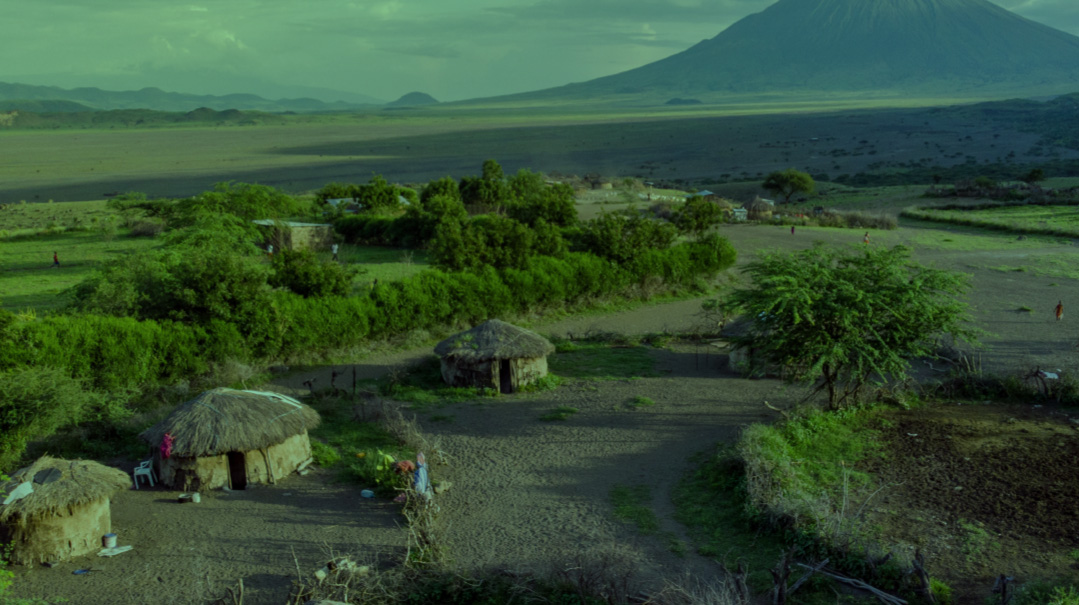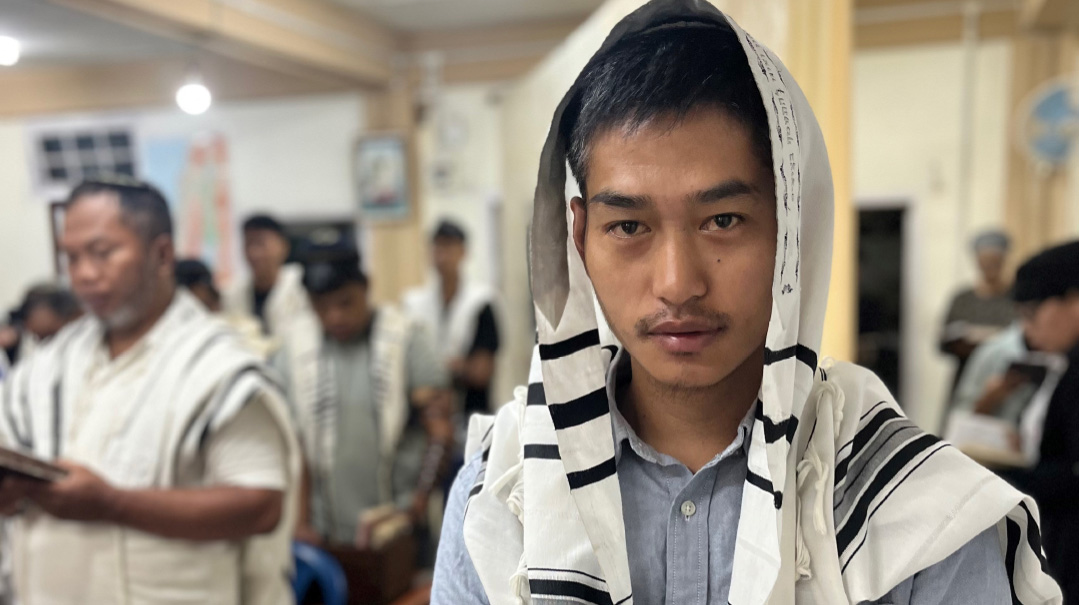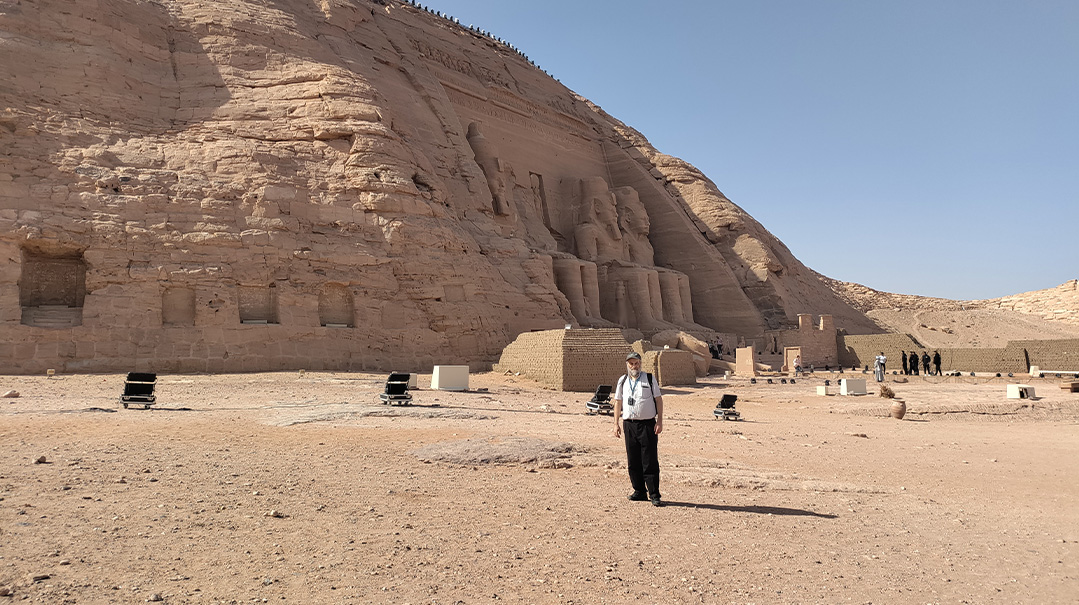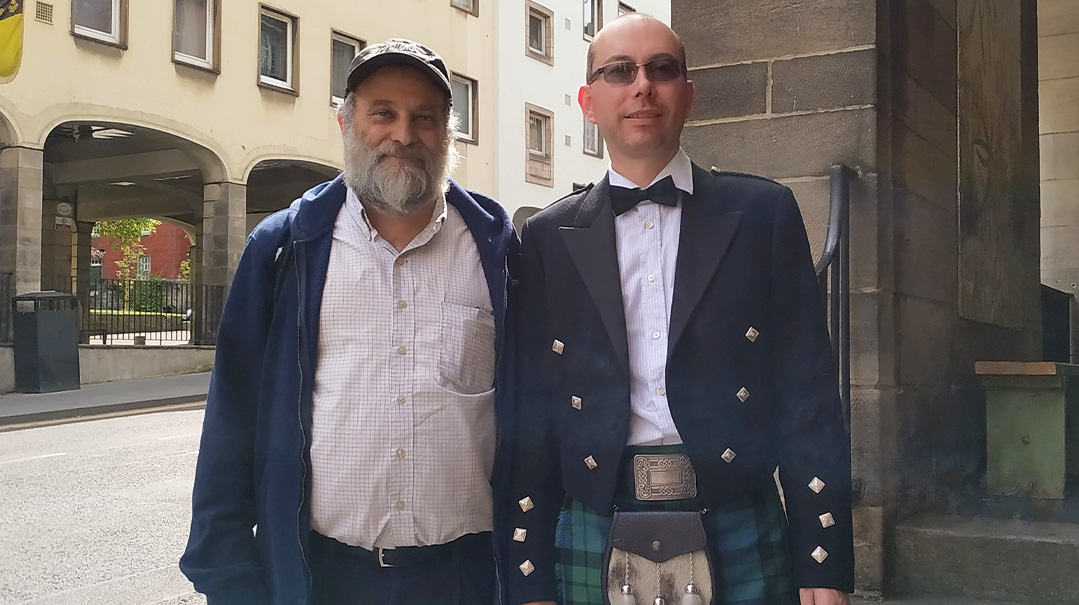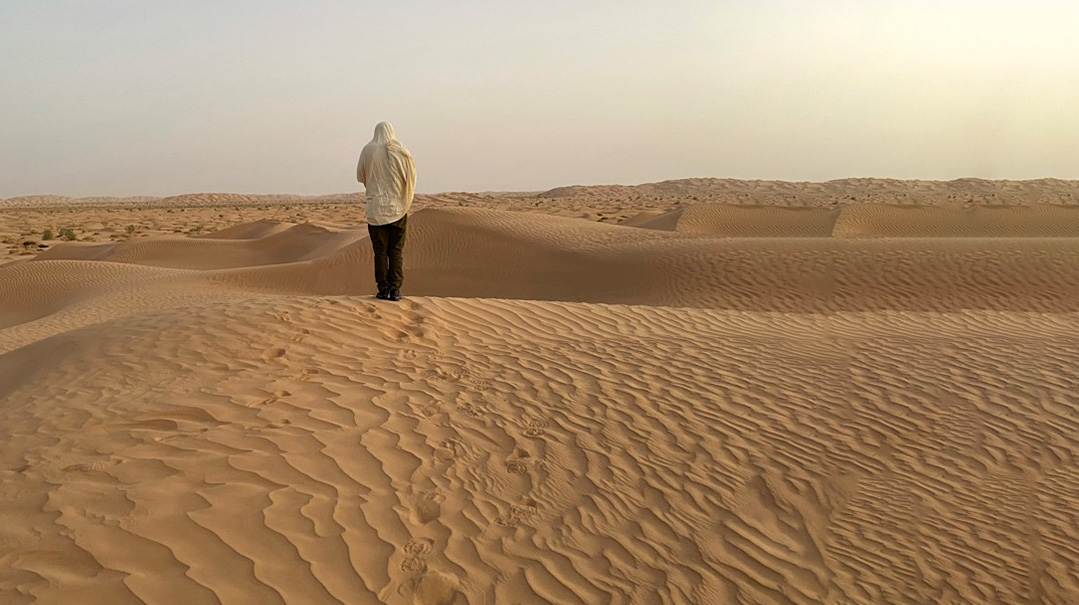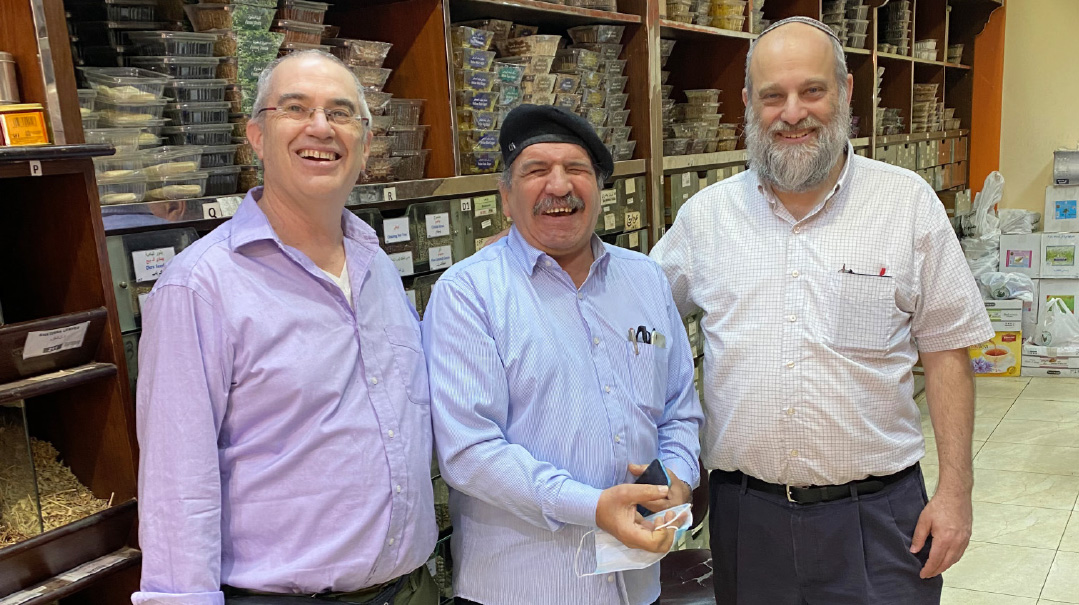Bent Reeds
| January 30, 2024Ari and Ari visit the spot where Moshe was hidden in the reeds
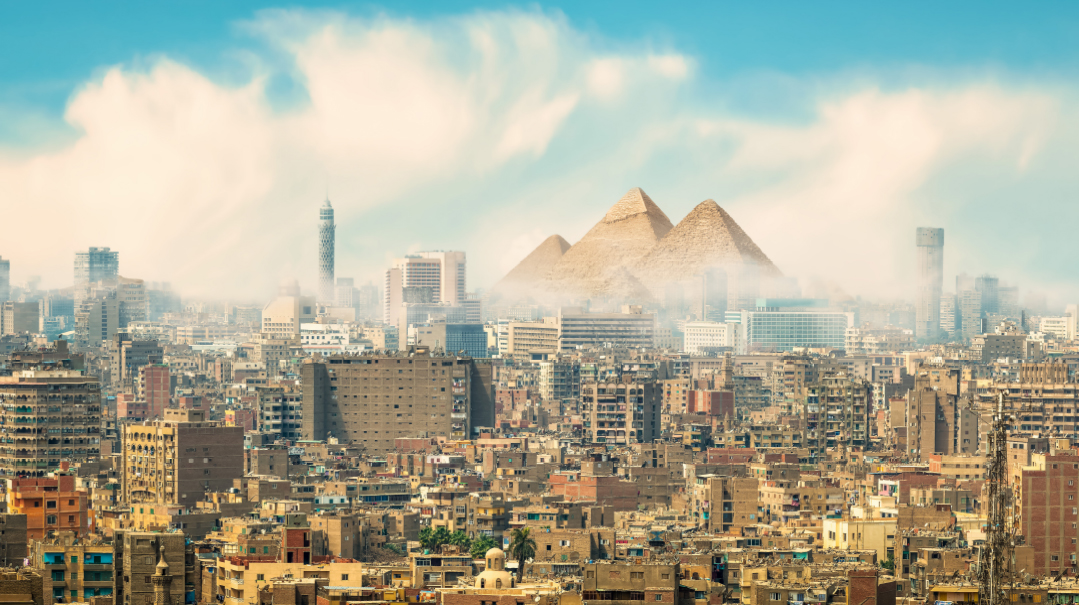
Egyptian legends speak of Pharaoh’s capital as just a few miles from modern Cairo, and one of the city’s ancient shuls is said to be built on the spot where baby Moshe was hidden in the brush of the Nile. While the river today is a good hundred yards from the city’s old synagogues and most of the Jews have gone as well, we wanted to trace the current of one of the oldest Jewish communities in the world
Cairo is a massive, bustling, sprawling, dirty, polluted, overcrowded, and noisy metropolis with over 21 million people, making it the largest urban agglomeration in Africa, the Arab world, and the Middle East — its ever-widening reach having swallowed up many of the surrounding areas.
It’s also a community that, over the centuries, had the Rambam, the Radbaz, and Rav Ovadiah Yosef as its rabbis, and is probably the oldest Jewish community outside of Eretz Yisrael. Jews have been living in Egypt almost continuously since the days of the Avos, and Cairo and its old city of Fustat have had a Jewish presence for over 1,300 years, but in our days, an active Jewish presence seems to be coming to an end. Remnants of a once grand community abound, yet today, Jews are hard to find. While Egypt is currently off the Jewish tourist route for security concerns, the rich Jewish history in Cairo had been an attraction for Jewish and Israeli tourists.
Cairo’s long-standing Jewish population began to grow from about 3,000 people in the early 1800s, to over 40,000 in the years following Egypt’s independence from Britain in 1922. Yet while the Jews flourished in business and built spectacular modern synagogues, with the founding of the State of Israel and an ensuing surge in anti-Semitism in Egypt, a massive modern exodus ensued. During the 1967 Six Day War, many of the remaining Jews were arrested, and the overwhelming majority of Cairo’s Jewish community eventually moved to Israel, France, or Italy. Today, there are but a handful of older, mostly female, Jews remaining in Cairo.
Cairo has been the capital of Egypt for centuries. However, the stifling congestion and overcrowding has reached the point that in 2015 the Egyptian government announced that it was building a new capital city about 30 miles east of Cairo. Construction began and some government offices have already relocated to the as yet unnamed New Administrative Capital (NAC) that is costing tens of billions of dollars.
As guest speakers on one of Miriam Schreiber’s Legacy Kosher Tours trips to the land of the pharaohs, we got a sense of the overcrowding and disorder of modern Cairo just looking out our hotel window: the main traffic arteries crammed with vehicles as cars and buses weaved across the wide boulevards that had no markings to indicate lanes, nighttime drivers speeding along without any headlights. It was into this urban sprawl that we headed out to explore the remnants of a once-glorious Jewish community.
Painful Reminders
The only active shul in Cairo (“active” is a relative term) is the Sha’ar HaShamayim shul, also known by the street it’s on, the Adly Street Synagogue. Approaching the shul, you can’t help but notice that in addition to the Magen Davids and palm trees decorating the outside wall is a heavy concrete barricade. This is the heart of Cairo and security is tight. In 2010 there was even an attempted bombing.
This is a large, stately, ornately decorated shul, built over a hundred years ago. In the 1940s, upper-class Jews would fill its pews, and although it’s no longer used regularly, it is still deemed the only active shul because when a shul is needed (by a visiting Israeli delegation, for example, or by the Egyptian government for some purpose), this is the venue. All the other shuls are either refurbished purely as tourist sites or in serious disrepair.
It was here that we met the current head of the community, Magda Haroun. She told us how the dwindling community still meets in this shul for Yamim Noraim davening, although the attendees are largely Israelis, tourists, students, diplomats, and expats. The remaining Jews are three older women, and there seems to be no discomfort in the fact that all married members are intermarried. Magda told us that she was married twice — the first time to a Muslim, with whom she has two daughters who are halachically Jewish but considered Muslim under Egyptian law — and now to a Catholic. Still, she has a goal: trying against all odds to preserve whatever little Jewish community still exists in Cairo.
Following our conversation with Magda, we noticed that attached to the shul was a locked room, which one of the guards indicated was a library. We nudged and prodded and cajoled and eventually were given access to a room filled with bookshelves of dust-covered old Jewish books. They were organized by topic, with most of them being sifrei kodesh — old Gemaras, Chumashim, and various halachic works, with every section and each book labeled appropriately. We were a little surprised to find smaller sections labeled Zionism, State of Israel, and Jewish History. As we took out books to leaf through, the guards stood over us like hawks to make sure everything found its way back to exactly where it belonged. The many guards that are permanently stationed in this shul were strict about their orders — at first they didn’t even let us take pictures in the main sanctuary. This library, which probably hasn’t had a new book added to its collection in 50 years, bears testimony to the community that once davened in this large shul — a community that learned Torah, davened, cared about halachah, and was interested in Jewish history and the Land of Israel.
In the front of the shul is a wide, elevated bimah with a distinctive lectern off to the side. It immediately looked familiar, and reminded us that one of those painful “special occasions” when the Egyptian government wanted to make use of a shul was during the 1973 Yom Kippur War. Word had leaked out that the Egyptians had been severely torturing Israeli POWs, rumors which ended up to be true. In order to counteract them, the Egyptians selected a few prisoners, temporarily improved their treatment, and then paraded them in front of the media in the Adly Street Synagogue. A few years back, we’d actually seen a picture of our neighbor’s brother who had been a POW, dressed in his prisoner garb and standing at that very lectern. Tragically, even today, 50 years later, many of those former POWs still suffer from PTSD, a condition receiving heightened attention because of the current war.
It’s difficult to forget about the Yom Kippur War while traversing Cairo, especially as we kept finding ourselves on the Sixth of October Bridge. The name commemorates the date on which Egypt and Syria launched the Yom Kippur War, which in popular Egyptian culture is viewed as an Arab victory. The “bridge” is actually not just a bridge, but a 12-mile road that goes through downtown Cairo and connects the city to its international airport.
Tree of Life
Perhaps the most famous association Jews today have with Cairo is the “Cairo Genizah,” a massive collection found in the late 19th century behind a small opening high on the wall of the women’s section in the Ben Ezra synagogue in the old city of Cairo. The Genizah, a vast collection of documents going back 13 centuries, is one of the most important finds in all of Jewish history. It included hundreds of thousands of disparate documents including religious texts, marriage documents, poetry, business contracts, and letters documenting Jewish life and halachah for well over a thousand years.
In addition to monumental halachic and legal documents, such as multiple documents in the Rambam’s own handwriting, it also includes numerous attestations to daily life: angry letters from a wife to her absentee husband, complaints about Red Sea business travel, a memo about an opium deal, accounts of a silk merchant, graphic descriptions of gastrointestinal problems and bedbug infestation, and confessions of a single dad unable to travel for business. From the dustbin of history has emerged a treasure of documents.
The importance of those materials in understanding the full picture of Jewish life in Egypt and beyond cannot be overemphasized. The original shul at that site is thought to date back to the year 882 CE, and when the Rambam moved to Fustat in 1166, he is said to have davened in Ben Ezra. A piece of wood from atop the aron kodesh with a 13th century inscription is today housed in the Israel Museum.
The Ben Ezra synagogue sits in the historical, winding, narrow alleys of Fustat that likely still look similar to the days of the Rambam. The shul building, erected on the site of a much older shul, is actually relatively new. For much of the 20th century, the building was in poor shape, but after the Camp David Accords, the Egyptian government realized the historical significance and the tourism potential and began a massive restoration project. What’s visible today is a sterile, refurbished building that has essentially been turned into a tourist site, listed by the Egyptian Ministry of Tourism and Antiquities as one of the important sites to see in Fustat.
IN August 2023, Egyptian Prime Minister Mostafa Madbouly again inaugurated the synagogue following another extensive renovation. It is in the historic district not far from the Amr ibn al-As Mosque (the oldest mosque in Egypt), the Coptic Museum, and several old churches. We witnessed many international tourist groups as they came through the Ben Ezra Synagogue as part of their historical tours.
The shul is relatively small, there is little to see inside, and the opening to the genizah is high up in the ezras nashim and inaccessible. But standing at the site where Jews, including the Rambam, davened over a thousand years ago is awe-inspiring. And while the Nile River is today over a hundred yards from the shul, local tour guides relate that it once flowed right past the building. According to local lore, in fact, the shul was built on the very spot where baby Moshe was hidden in a basket among the reeds.
We made our way around the shul to the small backyard where construction was taking place on a side entrance to the ezras nashim. We climbed a wooden staircase built around a thick old tree and walked over a temporary bridge to enter the women’s section. Looking at the tree more closely, we found ourselves face-to-face with a massive aravah (willow) tree. In fact, the stems of the aravos were bright red. Remembering that the Rambam himself describes aravos as having red stems, and realizing this was a very old tree, we wondered if this could be the very same tree from which the Rambam harvested his aravos. Indeed, when we later showed pictures of it to experts, they confirmed that based on its size it could easily be over 1,000 years old and indeed may have been there during the Rambam’s time.
Cairo Customs
Rav Refael Aharon ben Shimon, originally from Morocco, became the Chacham Bashi, or chief rabbi, of Egypt in 1891. Later, he wrote a history of the rabbis of Egypt called Tuv Mitzrayim, and at the end of the book he included a discussion of some of the shuls. He describes a large, ancient synagogue, whose “glory of its old age hovers over it,” called “Knis Ezra” or “Ben Ezra.” However, he says that he was unable to determine the origin of the name Ezra as it related to that shul. Local guides generally say that the original site was purchased in the ninth century by a Jew named Ben Ezra or that it is (inexplicably) named for Ezra Hasofer. Tuv Mitzrayim was also at a loss to explain the custom that after Pesach and Succos, on Rosh Chodesh Iyar and Rosh Chodesh Marcheshvan, the entire community — including men, women and children, would gather at the Ben Ezra shul, light candles, do hakafos with a sefer Torah, and then have a huge repast.
He mentions that due to its old age, the Ben Ezra shul had recently (in the 1890s) been renovated, but noted that its original structure and character were fully preserved. (The irony of how “preserved” it was is illustrated by the fact that during those renovations the genizah was emptied and left in a pile outside, and then, after the renovations, the treasure trove of centuries-old documents was dumped right back in the storage room behind the ezras nashim, where the awesome historic record was soon “rediscovered” and brought to the attention of the Jewish world.)
The traditions of the shul that he records go much further back. Not far from the entrance is a stone monument, about two feet tall and four feet wide, which is treated with great respect, because local tradition maintains that this is the very spot where Moshe Rabbeinu davened to remove the Plague of Hail from the Egyptians. Moshe told Pharaoh (Shemos 9:29) that when he’d leave the city (the area where there was avodah zarah), he would daven, and the tradition among Egyptian Jews was that the border of the Pharaoh’s city was at that spot, and thus, when Moshe reached that point he davened. When the Egyptian government renovated the shul, they preserved it mostly as it had been in the late 19th century, including inscribing this story on that stone.
Intrigued by the connection between an Egyptian shul where the Rambam davened and Moshe Rabbeinu, we wanted to see if there were other traditions in modern Egypt that reflect the stories we’re reading in the parshiyos this time of year.
What we did discover was that Cairo had some unique customs that related to its particular circumstances. For example, they had an extra day on which Tachanun was skipped: Each year on the day when the dam of the Nile was opened, no Tachanun was said at Shacharis or Minchah, as it was a day of great joy for all the residents of Egypt.
Cairo, like many other Jewish communities, has its own “Purim,” as well, a celebration of a local salvation of the Jewish community. Purim Cairo, celebrated on 28 Adar, two weeks after the “real” Purim, commemorates the great miracle that took place in 1524. The local governor arrested prominent Jewish community leaders of Cairo and threatened the rest of the community if an exorbitant ransom was not paid. On the day it was due, the governor was stabbed to death by one of his junior officers, and the community was saved. On the night of this Purim, the Jews read a megillah that retells the story.
Another custom among Cairo Jews was that on Erev Yom Kippur at Minchah, the huge annual tefillah took place, when even less-affiliated Jews would come to shul. The shul became like a minyan factory, with one group entering as the previous one left. They even wore tallis and tefillin for that Minchah, as a way of “protecting” some of the less religious, who never came to shul except for that day; and, so that no Jewish male would have a year go by without having worn tefillin, they instituted this custom so that they would all have donned tefillin before Yom Kippur.
There are 12 synagogue buildings still standing, some on regular tourist routes, others only accessible on prearranged visits. All are under the auspices of the Egyptian Ministry of Tourism and Antiquities, which keeps a watchful eye on them and has promised to preserve them (as well as keeping an eye on the visitors). The city even has the world’s largest, albeit non-active, Karaite synagogue. Cairo had been a major center of Karaite life in the past.
Dead Space
One of Cairo’s World Heritage Sites is the City of the Dead — the hundreds of thousands of people living within Cairo’s huge old cemeteries. The phenomenon started in the late 19th century and has been increasing ever since, due to Cairo’s intensive urbanization and its ensuing housing shortage. Driving toward the Jewish cemetery, we saw the vast expanse of cemetery parallel to the road. And while we had heard of the City of the Dead, it was still surreal and difficult to absorb that within the cemetery, there was a regular neighborhood with hanging laundry, huts or tents, and people sitting on chairs.
Unfortunately, the encroachment of the living on the sacred space of the dead has not spared Cairo’s Jewish Bassatine cemetery. It is one of the oldest Jewish cemeteries in the world, in continuous use since possibly the 9th century, and not surrounded by a wall. We had heard about how squatters had moved in and destroyed large sections of the cemetery. But we were unprepared for what we saw.
It wasn’t merely tent dwellers and poor people in shacks. Apartment buildings have so utterly overrun sections of the cemetery that it now looks like multiple cemeteries separated by neighborhoods, when in fact it had all been one large Jewish eternal resting area. In addition, many marble slabs have been looted, and for decades the site was used for waste dumping. The construction of Cairo’s ring road in 1988 split the cemetery in two. The current Jewish cemetery, less than a quarter its original size, is surrounded by a wall and is being preserved and restored by a wide range of entities, including the US embassy in Cairo and an old Egyptian-Jewish NGO known as Drop of Milk. Drop of Milk (Goutte de Lait) was founded in 1921 as a chesed organization to assist Cairo’s Jewish poor. Today, with almost no Jews in Cairo, it is headquartered in the Sha’ar Hashamayim Synagogue and has shifted its focus to preserving Jewish heritage sites in Egypt and fostering interfaith understanding.
The neighborhood abutting the cemetery was inhabited by folks who, by their looks, seemed not to be in love with the Jews. The garb identified them as Muslim, and the neighborhood identified them as lower socioeconomic class — a combination making them less friendly to both Westerners and Jews.
Crawling to Salvation
We were surprised to learn that a grave in one of the isolated, smaller sections is that of a miracle worker named Rav Chaim Kapusi, who had been well-known among Egyptian Jews. Walking from the larger section of the cemetery to Rav Kapusi’s grave, we felt the stares and noticed the dogs and were happy to have an enhanced police escort for this part of our trip.
Born in Algeria in 1540, Rav Kapusi moved to Egypt in his youth and eventually became a well-known dayan. After his death in 1631, his kever became a pilgrimage site, particularly on his yahrtzeit (12 Shevat) and Erev Yom Kippur, when both Jews and non-Jews would visit his grave. The neighbors, essentially living on Jewish graves, are accustomed to visitors and easily directed us to Rav Kapusi’s kever.
In his 19th-century travelogue, Rav Yaakov Sapir (known as the Even Sapir) recounts the story behind this special kever. He relates that he went by horse-drawn wagon to the large and ancient cemetery, a two-hour journey out of the city. He saw one grave covered with a pile of stones that was drenched in oil — poured by every man or woman who had a supplication, after the petitioner would remove his shoes at a distance and crawl to the grave on hands and knees.
Rav Sapir related how at one point, Rav Kapusi’s eyesight began deteriorating, and rumors circulated that he had accepted a bribe and that his blindness was a Divine punishment. When Rav Kapusi learned what was being said about him, he gathered the community together on Shabbos and declared his innocence. He said that if he was guilty, his limbs would shrivel, and he wouldn’t be able to descend from the bimah, and if he was innocent, his eyesight would instantly be restored. Immediately, his vision miraculously returned, and he walked into the crowd greeting each person by name. From then on, he became an address for brachos and yeshuos, even after his death.
It was actually a pleasant surprise to be able to visit the kever of Rav Kapusi, because during our stay, a more famous kever in Egypt was inaccessible. The 19th-century Rav Yaakov Abuchatzeira, the Abir Yaakov — grandfather of Rav Yisrael Abuchatzeira, the Baba Sali — was on his way from Morocco to Israel when he died on 19th of Teves in 1880 in the Egyptian city of Damanhour on the old, slow road from Cairo to Alexandria. Depending on the whims of the Egyptian government, some years there is a pilgrimage of hundreds to the kever, and some years they ban it. When we were in Egypt, the authorities informed our Egyptian guides that Muslim extremists had threatened to kill any Jew who would visit the kever, and we were thus barred from traveling there.
From Ceiling to Floor
Historically, there were other Jewish communities spotting the Nile Delta between Cairo and Alexandria. One example is the Rabbi Hayyim El-Imshati Synagogue, also known as the Synagogue of Khokhet El Yahoud, whose ruins still stand in El Mahalla El Kubra, about 100 miles north of Cairo. The original shul was probably built around 1044, fell into disrepair and was renovated around 1860. The community peaked at about 300 Jewish families in the early 19th century, but by 1937 there were only ten left.
The only non-refurbished shul in Cairo we were able to gain access to was the Etz Hayim or Barukh Hanan synagogue, built in 1900 on Qantaret Ghamra Street. From the street you can see the facade of what was clearly a stately, elegant building, adorned with Magen Davids and with two large stone luchos at the top of what once was the main entrance. Entering through a side entrance, we saw a main sanctuary with a high ceiling and beautiful skylight. It clearly had not been used in decades, but most of the shul contents — chandeliers, benches, and even sifrei Torah were still present.
It was easy to imagine this being an active shul (in fact, there was even a short-lived yeshivah established in 1945 in the shul’s courtyard). On the back wall was a large marble plaque listing the names of donors and the name of the 19th-century Chacham Bashi, Rav Refael Aharon ben Shimon. The caretaker family still lives in a very modest shack attached to the shul. With no Jews now using the facilities, they have “expanded” their meager living quarters to include the shul’s mikveh.
The caretaker described how he remembered when there were still Jews here, and he seemed familiar with some of the customs. In fact, when we tried to sit in one of the more ornate chairs, he chased us off, saying that it’s a special seat for an avel. What was he talking about? It turns out that mourners in Cairo came to shul on Monday and Thursday for Torah reading, and there were seats in front specifically for them. After davening the congregation would gather around them and recite biblical verses of consolation. Because of ayin hara, no one else ever sat in those seats.
Located in an even older part of Cairo, dating back several centuries before the Rambam appeared in town, there is a shul currently bearing his name, accessible only on foot. Walking the winding narrow alleys gave us a sense of what medieval Cairo felt like, and we could imagine joining the throngs of Jews making their way to hear his words of wise counsel. The Maimonides Synagogue, or Rav Moshe Synagogue, has recently been renovated by the Egyptian authorities. According to Egyptian lore, when the Rambam was niftar on 20 Teves, his body was temporarily buried in the courtyard of this shul before being reinterred in Teveria. From then on, tradition claims, anyone in need of Divine assistance could spend the night sleeping on the floor in the room next to the main sanctuary, and his tefillos would be answered. This practice continued until modern times, but unfortunately, the day we were there, that side room was flooded, so we couldn’t even take an afternoon nap.
As the Cairo Jewish community is reaching its end, the remaining shuls, Judaica and seforim collections are under the watchful eye of the Egyptian government and will thus likely survive only as tourist attractions. Cairo was once home to a unique and vibrant Jewish community, but the lights are now being turned off with little remaining to attest to its rich history. Still, while the real estate may crumble, the legacy and Torah of the gedolim who sojourned in this ancient city will always live on. —
(Originally featured in Mishpacha, Issue 997)
Oops! We could not locate your form.

